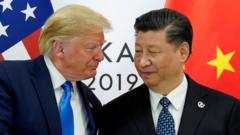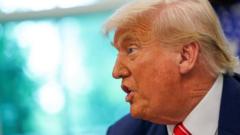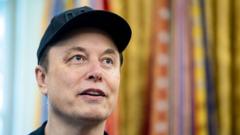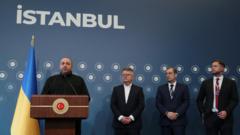In the lead-up to Canada’s federal elections, the second debate showcased leaders addressing key issues such as trade, affordability, and crime. Liberal leader Mark Carney faced scrutiny due to the legacy of Justin Trudeau, while his opponents aimed to differentiate their platforms. Amid policy disputes, the tone remained civil, contrasting with recent U.S. political debates.
Key Insights from Canada's Leaders' Final Debate Ahead of Elections
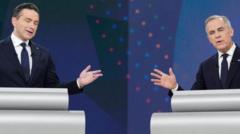
Key Insights from Canada's Leaders' Final Debate Ahead of Elections
The final debate between Canada's major party leaders highlighted critical issues, with U.S. President Trump influencing discussions and each leader staking their claim on various policies.
The leaders of Canada’s four major political parties participated in their second and final debate ahead of the upcoming general election, with significant attention directed toward former Prime Minister Justin Trudeau, even as most candidates focused on their own platforms. Mark Carney, leading in the polls as the Liberal candidate, faced intense questioning from Conservative leader Pierre Poilievre, New Democratic Party leader Jagmeet Singh, and Bloc Québécois leader Yves-Francois Blanchet.
One primary concern was the ongoing trade war with the United States, with Carney specifically challenged on how he would manage tariffs imposed by U.S. President Donald Trump. Previously, Canada’s strategy had been to implement “dollar-for-dollar” tariffs; however, Carney shifted this narrative during the debate, acknowledging the necessity for a more targeted approach due to the economic power disparity between the two countries.
Beyond trade, the debate also drew attention to deeper domestic issues including housing affordability, healthcare, and crime. Poilievre promoted a vision of minimal government intervention, while Singh called for an expansion of social programs. Carney attempted to occupy a centrist position, asserting the government should play a catalytic role in crises.
The debate exposed the struggles of smaller political parties, particularly the New Democrats, who risk losing significant ground based on current polling trends. In this environment, Singh made a concerted effort to assert the relevance of his party’s platform, strategically interrupting to amplify his calls for leftist policies.
Despite some contentious exchanges, the debate retained a surprisingly cordial atmosphere. Both Carney and Poilievre engaged in polite banter even after heated moments, demonstrating a level of civility contrasting sharply with political discourse in other countries. As the election approaches, the performances in this debate will likely play a critical role in shaping voter sentiment and determining the outcomes in the polls.

